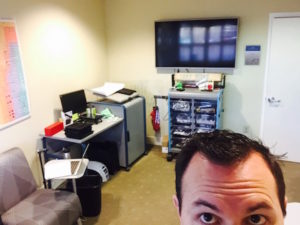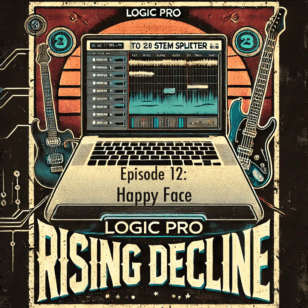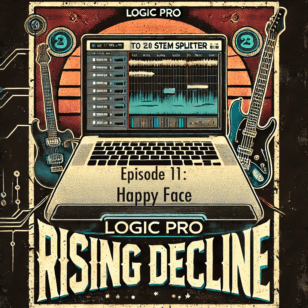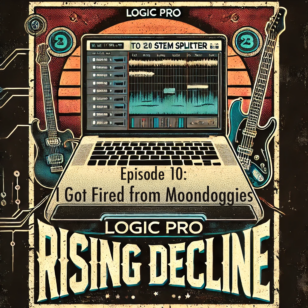Wow, year two at Hillbrook is in the books. Well, not actually in the books; that will happen tomorrow afternoon when I finish up some paperwork for the end of the fiscal year. But figuratively, the school year is in the books (eBooks? iBooks).
Here were my goals from the 2015-2016 school year: How can pilot programs, such as portfolios and the 8th grade capstone project, serve as a catalyst for strengthening our efforts to better individualize our program? How might we shift the focus from Digital Citizenship to Digital Leadership? How might the members of the tech team continue to grow? How can we tell the Hillbrook story through technology? How might we incorporate coding, robotics, and programming in the JK-8 curriculum? How can I build on my engagement with the broader tech community to bring along other members of the Hillbrook community and open them up to leadership opportunities in ed tech?
 Before I dig into each goal in detail, there are three highlights I’d like to start with. Hour of Code in December was a huge success with every student spent at least one hour coding. Grade 1-8 participated in a schoolwide Hour of Code where each student participated in two of twelve sessions. Our social media presence has grown tremendously, particularly on Twitter, with both grade-level Twitter accounts and personal, faculty accounts. Finally, our shift from “digital citizenship” to “digital leadership” transformed the way students, faculty, and parents talk about device usage. This simple shift in words helped us move away from fear-based conversations and towards inspiring conversations like “How might we use these devices to be leaders at our school?”
Before I dig into each goal in detail, there are three highlights I’d like to start with. Hour of Code in December was a huge success with every student spent at least one hour coding. Grade 1-8 participated in a schoolwide Hour of Code where each student participated in two of twelve sessions. Our social media presence has grown tremendously, particularly on Twitter, with both grade-level Twitter accounts and personal, faculty accounts. Finally, our shift from “digital citizenship” to “digital leadership” transformed the way students, faculty, and parents talk about device usage. This simple shift in words helped us move away from fear-based conversations and towards inspiring conversations like “How might we use these devices to be leaders at our school?”
I would also like it duly noted that this reflection serves are both a formal evaluation for my role as Director of Technology at Hillbrook School as well as a blog post. Last year, I decided to share my reflection after I submitted it to our Head of School Mark Silver. This year, my primary audience continues to be Mark, but in the spirit of Show Your Work, I plan to also share this on my blog (and I did!).
So, on to the goals… Goal 1: How can pilot programs, such as portfolios and the 8th grade capstone project, serve as a catalyst for strengthening our efforts to better individualize our program? The 8th grade capstone project was a huge success. Eden Maisel did an extraordinary job heading up this new addition to our program. 8th grade students opting-in and volunteer Capstone Coaches set the tone for this optional project. As students researched their passions, we noticed that this was the culmination of years of interests for some, and a nascent interest for others. As we look ahead to next year, I am hopeful that we will have more time for our 8th graders to work on these projects, and I am hopeful that this will become a culminating event for students as they explore their passions at Hillbrook.
We made some progress with portfolios. One year ago, the tech team was searching for the single tool to would solve the problem of where student work lives. In parallel with the writing continuum, the hope of the student portfolio is to better individualize our program. In short, we never did find the one app or website that would be the perfect solution for documenting student work. And I think that’s ok. Moving forward, I see two paths to further explore: first, teachers will document student work. Apps like Sesame and tools like the writing continuum will help teachers keep track of each student and help students reach their highest individual potential. Second, will continue to use digital tools like Google Sites and Book Creator to make their own learning visible, and record their learning.
Goal 2: How might we shift the focus from Digital Citizenship to Digital Leadership? Inspired by George Couros’ blog post Digital Leadership Defined, we changed how we refer to behavior around technology from digital citizenship to digital leadership. George defines it as “using the vast reach of technology (especially the use of social media) to improve the lives, well-being, and circumstances of others.” After five years of one-to-one iPads, it was time for us to move beyond the minimum. In our Learning in Conversation parent meeting, we asking questions like “How do you help teach resilience?” and “How might we teach our students to be leaders in technology?” There was a significant shift in tone as parents looked for opportunities to help their child grow instead of fearing which “scary” app their student might be using.
Changing the name to digital leadership was only the first step. Students created digital citizenship projects for their peers at Hillbrook and beyond. From games to videos, our students taught other students how to be more responsible with technology and how to grow into digital leaders themselves. Goal 3: How might the members of the tech team continue to grow? Last year, one of my goals was to clarify job roles in tech department. Building on that success, this year’s primary goal to was support the tech team and help them seek professional development by both participating in and presenting at conferences. The entire tech team–Emily Hendricks, Kelly Scholten, and me–presented at both Fall CUE and will present at ISTE 2016. Mirroring our vision, we continued to reach beyond Hillbrook to make a difference in the world through sharing the Hillbrook story.
Emily completed the Certified Casper Technician (CCT) Level 1 training, and is now a certified technician for our mobile device management (MDM) software. Goal 4: How can we tell the Hillbrook story through technology? Show Your Work continues to be a driving force in how faculty and students view technology. We see it in portfolios, continuua, capstone presentations, and regularly on social media.
The introduction of Grade-level Twitter accounts was a significant step forward. Pioneered by the kindergarten team, with the help of three new iPod Touches, the kindergarten team regularly documented student work and shared it with families on Twitter as @hillbrookkinder. Other lower school grade levels followed quickly, and soon most of our lower school teachers were sharing moments from their class with parents in real time. Moving forward, I am hopeful that more middle school teachers will begin using the grade-level Twitter accounts more regularly. I also encourage us to revisit the decision to keep all Twitter accounts private–this year was a huge step forward, and I believe that teachers and students worldwide can learn from us on Twitter.
More faculty are on Twitter sharing their pedagogy, learning, and thoughts. Notable Tweeting people include Lara, Sara, Matt, Chris, and Julia. In a similar vein, several teachers are blogging and sharing their learning and class projects, most notably Jenny and Kristin at hillbrooksoundproject.org. Goal 5: How might we incorporate coding, robotics, and programming in the JK-8 curriculum? Week of Code, the Hillbrook version of Hour of code, was a great way to expose teachers and students to the basics of coding. At the heart or this week was a two-hour coding experience for LS and MS students, where they could choose two different stations. Options included paper coding, Hillbrook Air Corps, and Sphero Art, to name a few.
We engaged parents and the community in Week of Code sessions for two reasons: we wanted teachers to participate (not lead) sessions, and we wanted this week to reach beyond 300 Marchmont. Parents, staff, and industry joined us on campus to run the 12 coding stations over two days. As we all shared our learning on social media, the larger ed tech world took notice and planned to ramp up their efforts for Hour of Code 2016.
Many students continued coding activities from Hour of Code both in and out of the classroom. Parents, teachers, and staff noted that coding is no longer as intimidating as it once was. In the coming years, I am hopeful that we can more meaningfully integrate coding into our core subjects, moving from cute programmable robots to coding to truly make an impact on the world.
I plan to continue to work with LS teachers during Genius Hour/ACE Hour/ICE Time to support coding in the coming year. Similarly, I’ll continue my work with kindergarten during Open Exploration Time to support coding and computational thinking. With the support from our teacher engineers, I’ll work to support MS math as they wrestle with integrating code into lessons. Goal 6: How can I build on my engagement with the broader tech community to bring along other members of the Hillbrook community and open them up to leadership opportunities in ed tech? Hillbrook’s Center for Teaching Excellence (CTE) provides a huge opportunity to share our faculty learning. Started in 2015, the CTE podcast brought a group of teachers together for a Google Hangout on Air to discuss our Reimagining Classrooms project. In December 2015, we published the second episode: iPads Year 5, featuring Julia, Kate, Kelly, & Christina.
A third episode is recorded, Mobile Inquiry, but remains partially edited on my laptop. I need to rethink how we can sustain the creation of the outward-facing CTE content, and balance it with inward-facing daily work at Hillbrook.
Our faculty presented at many ed tech conferences, keeping Hillbrook as a leader in conversations around meaningful and cutting edge classroom technology integration. At Fall CUE, Emily presented Own Your Tech! Technology Management in Today’s Classroom, Kelly presented Mirrors of Learning: Helping Students See their Process and Capturing the Journey: Process Portfolios in the Workshop Model. Kelly and Sara presented Making with Minecraft and Showcasing with Aurasma. Matt and I presented Comprehension is Just the Beginning: Using Subtext for Deeper Conversations. I also presented Rock the Elementary Classroom! Song writing Across the Curriculum, Robots Are Taking Over the World… But Should They? Sound Robotics Pedagogy, and You are the Infinite Thinking Machine!
At SVCUE, Jules presented Diversity in Technology: The Importance of Windows and Mirrors.
At National CUE, I presented Choose Your Own Edventure: Creating Interactive Google Forms, iPhoneography: Integrate Mobile Photography into the Classroom, Google Certified Teachers Panel, Underwater Adventures Documentary panel, and There’s a Chromebook Cart in my Classroom!
At ISTE, Emily will present Own Your Tech! Technology Management in Today’s Classroom. Kelly and Sara will present Making with Minecraft and Showcasing with Aurasma. I will present iPhoneography: Integrate Mobile Photography into the Classroom, Ready, Set, Make (makerspace panel), 1:1 Integration: a CTO Panel, I Think I Figured Out How to Use Snapchat as an Educator, Using Reflector 2 in the Classroom to Share Student Work, and I’m participating in the Amazon EDU Maker’s Challenge.
Looking Ahead I plan to align my 2017 goals to Hillbrook’s Vision 2020. As we look ahead to the design of the Hub, I plan on making that project a priority. The first step is Me as Maker. I plan to use my TechShop membership to prepare for strategic conversations around the Hub. Raspberry Pi is emerging as the platform for physical computing and coding; I’m planning on learning how to meaningfully integrate these into classes this coming year.
Individualization is a key component of the new strategic plan. I plan to support work and lead conversations around portfolios, ACE/ICE Time, and Making at Hillbrook.
I plan to foster the growth of the CTE. On social media, faculty learning will be shared as @hillbrookcte, whereas student learning is @hillbrookschool. I’ll continue to work to develop social media accounts to share faculty learning. Finally, our podcast will be the big piece of content we share. I will create smaller pieces of other content (excerpts, images, resources) as we work on the lengthy podcast to continually share our faculty learning.



